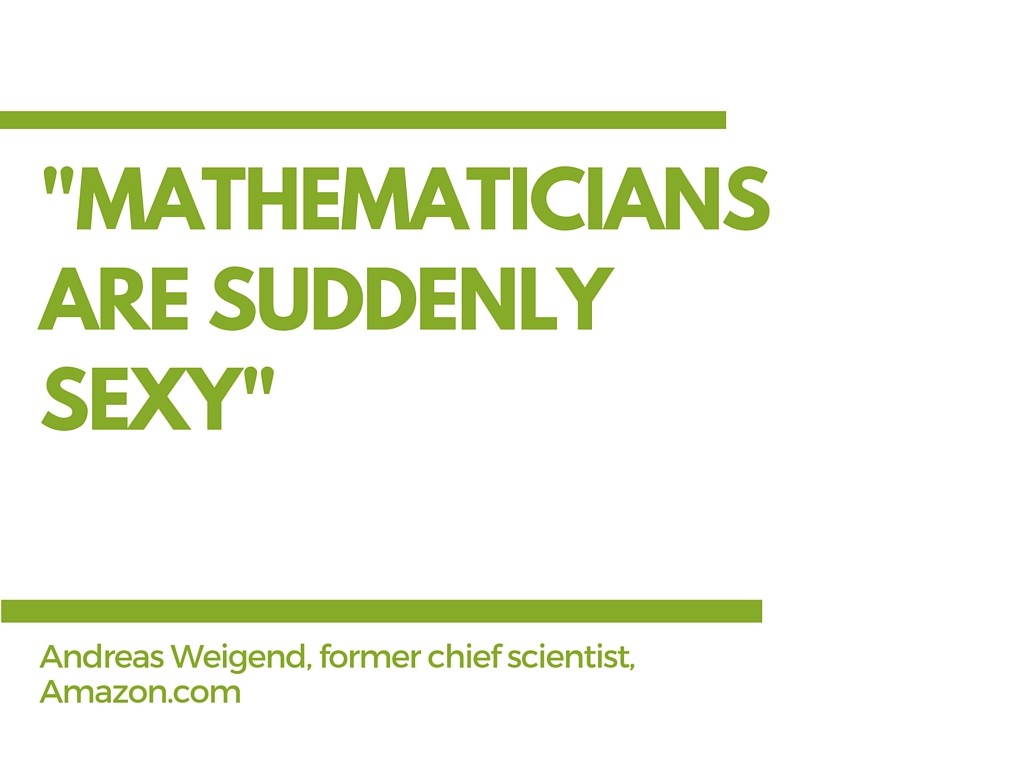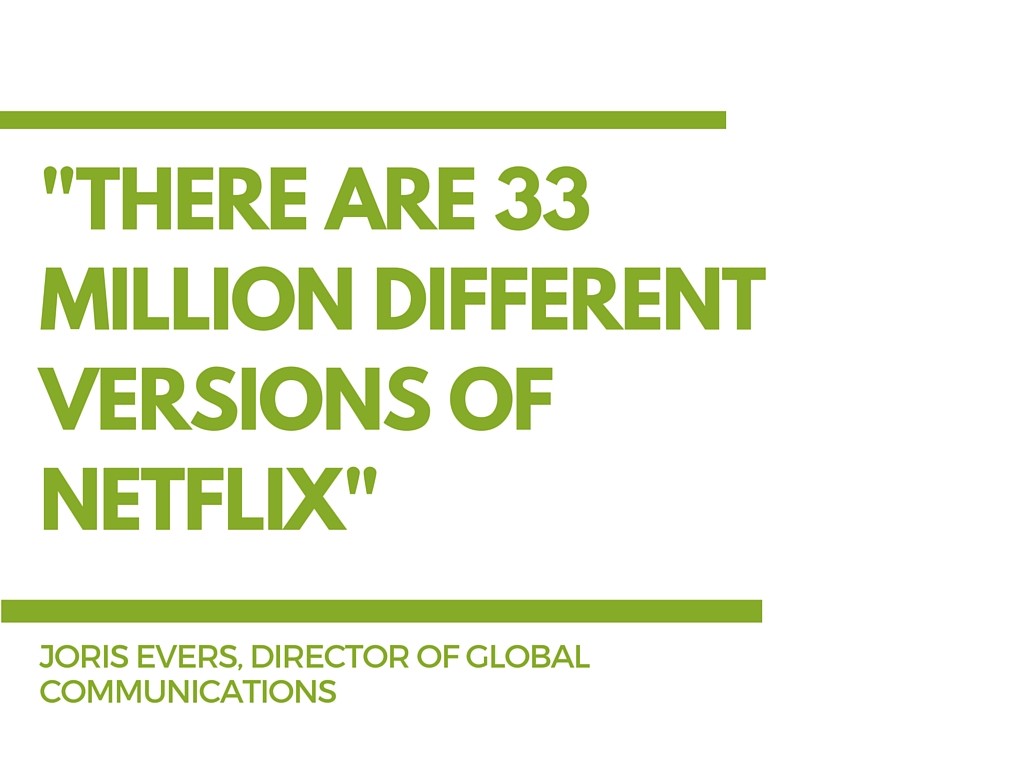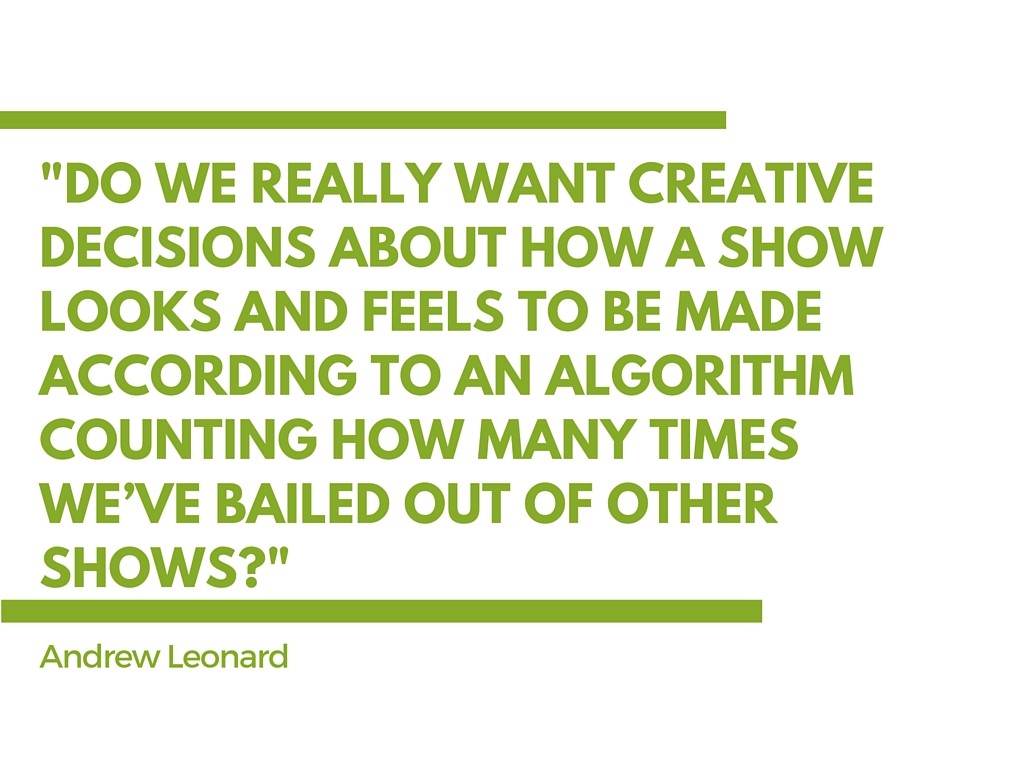Marketers fear that Big Data trend will deprive them of the most valuable aspects of their work: creativity, imagination, and thinking out of the box. Math Men replace Mad Men. We no longer need inspirational marketers who wait for their muse to strike them with an incredible idea. Forget Madison Avenue and welcome to the cold world of data and analysts, human calculators who will soon dominate the job market. Abandon all hope, ye who enter here.
That melodramatic story about the clash between gut-driven creatives and ice-cold analytic machines presents a false alternative. And no, big data nor big data or computers or algorithms won’t take your job.
Deliver Amazing Shopping Experience. Download the Free Guide
Don Draper’s Dead Body
Leo Burnett brought Marlboro Man to life basing solely on his intuition and strike of creative power. Steve Jobs despised focus groups and research. How can we ask customers, if they don’t know what they want? They will find out when you deliver them the product!
Some say that the age of such visionaries is over. Now we will use data to produce answers because machines outperform humans in more and more areas of life. Today’s computers learn, recognize patterns and can process mountains of data, much more than humans. As a consequence, they can easily replace human marketers: they’re better in customer segmentation, addressing messages to the right people or even content creation.
No wonder that CMOs say, “We’re going to tap into the Big Data.” But before we start wondering how the trend shapes marketing, let’s clear up what it is (and why it doesn’t exile Mad Men and creativity from the realm of business).
What Big Data means?
When “just data” become “big data”? When they grow up and go to school?
The term describes all demographic and behavioral information the business collects about its customers (actual and potential ones) to understand their motivation and optimize undertaken actions.
Analyzing such data shows what communication channels perform best, how to indicate unsatisfied customers (before she complains) or what products to offer to a given user.
Big Data is characterized in terms of 3 vs:
– Volume: we are talking about massive sets here,
– Velocity: data are time-sensitive. They change fast and you should react to these changes quickly, in real time.
– Variety: data are diverse. The most advanced recommendation engines that suggest you products in the e-store use not just one kind of data, but many varied types of information: demographic (your gender, age, where you live), behavioral (what materials have you watched or read, what products have you viewed) and transactional (purchase history).
In other words, we say that Big Data are so massive, varied and fast-changing that it’s almost impossible to process them with traditional analytical applications we used to have at our disposal. Thus, a new discipline, Big Data science, was established.
Your daughter is pregnant and the marketer already knows
Big Data quickly became a buzzword and one of the most hyped terms, backed up by almost fantastic stories about machines outrunning humans. For example, in New York hospital algorithms decide basing on the symptoms whether a patient has a heart attack (and should be kept in the ward) or not (and should be sent home). It turned out that computers are more accurate at the task than human doctors, whose vision can be blinded with emotions or biased with stereotypes). Algorithms manage the hospital resources better.
Another case: Target chain store produced a marketing program that indicates if a woman is pregnant. Company’s research on millions of consumers shows that when during pregnancy, women change their shopping habits, abandon some products and pick up others. But before we get to HOW Target marketers accomplished that, let’s ask, WHY did they become so interested in pregnant women?
With a scion on the way, you change the shopping habits. You not only start to buy new products that you didn’t buy before (like diapers) but also your daily and weekly schedules gets re-organized, so your shopping patterns become plastic and can be re-shaped. You used to buy groceries at the shop X because you developed such habit, but now, when you have to buy new products and at the different time, you might start to change your routines and find the groceries while walking through Target aisles, looking for baby formulas. “We knew that if we could identify them in their second trimester, there’s a good chance we could capture them for years,” says Andrew Pole, a statistician at Target.
Knowing that the stakes are big, Target team got down to business. Having analyzed myriads of shopping lists, whey found out what products expecting women buy (for example they get more scent-sensitive and choose non-perfumed products). Armed with that knowledge, brand’s marketers send different newsletters to pregnant customers.
Once an enraged man entered the office. “Why are you sending diaper ads to my teenage daughter? Are you encouraging her to get pregnant?”
The manager politely apologized, by the algorithm didn’t make a mistake. When the manager called again to say sorry one more time, the conversation looked different. It was the father who apologized: “My daughter is due in August”, he said.
We read a lot of such stories lately, don’t we? As of it was enough to write a neat formula, feed it with massive data to make the money overflow your only problem. But it isn’t so. Let’s start from the beginning: how Big Data can be applied in marketing (and why humans are still needed).
What Big Data mean for marketing
Textbooks often describe marketing in terms of 4 Ps:
– Product
– Price
– Place
– Promotion.
We’ll adapt that frame to show how Big Data changes it.
1. Product: the data, both qualitative and quantitative – help develop the product or identify the essential products in your offer or manage the supply of the store.
2. Price: you can dynamically shape it and present different prices at different times in different places to different people. For example, if you have a hotel, you can increase the price as the hotel fills up. Or you can lower the price if someone approaches your brick and mortar store and let her know with a push notification that the sweater she viewed in your online store can be bought cheaper now. That way the message get more time-sensitive.
3. Place: with data, you can determine the best channels to offer your products.
4. Promotion: Pinpoint the target audience, run tests and predict the possible consumer behavior.
What data are vital for marketers?
We’ve been talking about analyzing data, but what it means precisely? What pieces of information or events should marketers take into consideration? The data relevant to the marketers can be divided into 5 groups:
Demographic data
• Age
• Gender
• Place of living
• Budget
• The role in the company (vital for B@B)
Behavioral data
• Products viewed
• Products added to cart but not bought
• Pages viewed
• Time spent on the pages
• Materials watched
• Reactions to marketing campaigns (email openings, clicks in the ads, participating in a given action)
• Geolocation
• Social media activity: mentions, reviews, likes, comments, shares
Transactional data
• Products purchased
• The average value of the shopping cart
• Shopping patterns
Data on mobile user
• How long has she been using the app
• How often does she use it
• What features or modules does she use most frequently
• How she reacts to mobile marketing messages (push notifications, in-app messages)
• What other apps has she installed on the device.
Declarative data
Information users give you in all types of surveys of questionnaires. In most cases it refers to consumers’ interests and needs.
As you can see from the list above, marketers must integrate the data from various sources to build the full profile of the user.
Why marketers gather data?
Where marketers focus data efforts? As Global DMA/ Winterberry Group research indicates, marketers expect data analysis to support and enhance the following areas:
– Targeting of offers, messages and content (69% of respondents)
– Data-driven strategy or product development (52%)
– Customer experience optimization (49%)
– Audience analytics/ measurement (44%)
– Predictive analysis (44%)
So we know what marketers collect and why they do it. Now we can peek behind the scenes and see how the top performers use that material to deliver amazing results.
Netflix
Netflix changed the way we watch and produce television. How?
Firstly, the brand started to measure the “completion rate”: what percentage of viewers of the season one of a given series made it to the last season. If the completion rate is high, it means that people liked the show and felt engaged enough to complete it.
But it’s not the only metrics the company follows. The system measures also:
• When you pause, rewind or fast forward
• When you watch (so Netflix knows that people watch TV series on the weekdays rather than on weekends)
• Where you watch (thanks to a zip code)
• What device do you use
• How high have you rated the material
• How you browsed
• Do you watch the credits (and what do you do afterwards)
Basing on that, the system calculates how many hours of the content a user must watch to renew the subscription next month.
To deliver the most accurate recommendation, Netflix uses both behavioral data (what have you watched, what have you rated high, what shows have you quitted). They also use the declarative data: when you set up an account, you’re asked to rate some shows and indicate the genres you like. That stage is important, because when someone begins to use the platform, there is not enough behavioral data to suggest her movies.
Combining so many metrics into one ecosystem creates one of the most advanced and precise recommendation engines in the world. That’s why Netflix know what you want to watch better than yourself.
House of Cards
Netflix doesn’t only use data to suggest your next favorite show, but also drives decisions on what shows to license. The company must determine what content will deliver the biggest viewership relative to the licensing costs, which is usually high. To do so, Netflix specialists monitor both external and internal data. For example, they bought Prison Break because it was heavily pirated – so there was a demand. And with the House of Cards, they analyzed their own audience.
When the British political series format, with David Fincher as a director and Kevin Spacey as a star, was to buy, Netflix team did some substantial data mining:
– Fincher’s “Social Network” showed high completion rate
– Also, the British version of HoC had remarkable viewership
– People that watched the British HoC also watched David Fincher and/or Kevin Spacey’s movies.
The analysis proved that there is the audience interested in such a show. It was confirmed by 270 000 users who rated the show 9/10. Such result places HoC next to Avatar or The Sopranos.
(Based on Zach Bulygo/ KISSmetrics blog and David Carr/ NYTimes)
Nevertheless, the spectacular HoC success brought a lot of negative comments. Andrew Leonard predicted that such practices would turn viewers into puppets and screenwriters and directors into algorithm’s peons. There is no room for creativity and originality in such paradigm because the new productions are based solely on what worked out in the past.
Ebay
Like many other companies, Ebay uses Big Data to suggest customers more relevant products and materials, but here we would like to draw your attention to something else: how they used the recommendation mechanism in web design.
Ebay’s home page don’t show you some random products: it consists of the dynamic content, customized to a given user. And it resembles a social media feed: it’s visual and friendly.
Best Mart
Best Mart uses Big Data to become the sales leader for video games. How?
– They start with a prognosis of what will be trending next season. To establish that, they combine user-data (what people bought and viewed in the past) and global analytics (movements in the games industry, movie releases, mentions in social media, terms searched in Google).
– They use data to determine the supply for their brick-and-mortar stores.
– Data also shape the price. It’s determined dynamically, in the real time, and depends on 4 factors: demand, competitors’ activity, supply and Best Mart price.
– Best Mart identifies the group of customers who will be interested in a product
– That segment receives the information about the product, each user in her preferred channel and at the most suitable time
– Then a cross-sell offer is prepared: the similar or complementary products are suggested to people who bought the game.
(Based on David Pittman)
To sum up: hand in hand
In all these companies experienced and creative marketers use advanced Big Data tools (such as Marketing Automation): one doesn’t exclude the other. Don Draper doesn’t go anywhere (although the times when you could grab a glass of scotch to stimulate your invention at work are over)! Data help us make decisions or provide material for automation or research, but still it’s a human marketer who has to pose a question, set a rule of automation or tell why something happens.






 Follow
Follow
















